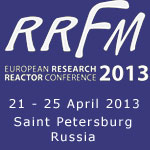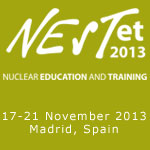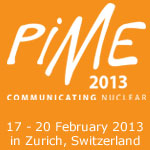ENS NEWS N° 39: Intro
When small can be beautiful too
It is probably fair to say that many European citizens are not fully aware of the multiple applications of nuclear technology. Most of them will be aware of how nuclear power plants generate electricity, but perhaps many are less aware of the fact that nuclear technology contributes greatly to our quality of life by providing tailor-made solutions to problems affecting agriculture and other industrial sectors, as well as by identifying methods of early diagnosis and treatment that help save thousands of lives every day. Of course, there is a vast range of basic and applied research being carried out by research teams across the length and breadth of Europe – and beyond. Research projects range from the large-scale to medium and small-scale ones. This statement might seem like a platitude to many readers, but does the average casual internet surfer that reads ENS NEWS realise it? Unfortunately, without the oxygen of publicity the fruits of applied nuclear research are less likely to get the recognition that they deserve and life-enhancing applications may never be properly exploited.
One area of research that is being spoken about more and more, both within the nuclear community and with decision-makers and other stakeholders, is that of small modular reactors (SMRs). Two events (one that took place recently and another that is soon to take place) provide evidence of this fact. On 30 January 2013, the Nuclear Industry Association (NIA) in the UK organised a conference in London dedicated to SMRs. On 28 February 2013, FORATOM is organising in Brussels, in cooperation with the Belgian Nuclear Society (BNS), an ENS member, a workshop dedicated to this topic. Experts from the world of research, academia, industry and the media, as well as senior politicians, were present in London, and will be in Brussels, to debate the future prospects for this exciting application of nuclear technology. Many advocates of SMRs are confident that SMRs will create and sustain a lucrative new market niche for the global nuclear industry. At the same time, they will help provide a vital source of energy in locations where it is currently difficult to obtain.
The concept of small modular reactors, which are sometimes referred to as “mini or “medium-size” reactors, is not a new one for the research community. Indeed, SMRs already power nuclear submarines and have helped propel space craft into orbit around the earth. But it is the more pragmatic question of how SMRs, generating anything from 100 - 600 MWe, could deliver electricity where no electricity grid is currently available, or where the construction of large-scale nuclear power plants is simply not an option. A series of SMRs working in tandem could be manufactured and assembled in a central factory and then brought to a site and installed. This is the essence of the modular approach. Because SMRs don’t need to be hooked up to existing large power grids, remote or isolated communities without access to base-load power could thus benefit from access to a flexible and alternative source of energy and thereby enable them to escape the energy poverty trap. It’s all about developing reactors that are adapted to suit the scale and requirements of different kinds of electricity production. Necessity is the mother of invention.
SMRs are also designed to use new fuels that allow higher burn-up rates and longer life-cycles, which will result in the production of smaller amounts of radioactive waste. What’s more, a modular approach also offers greater containment efficiency and materials security, which results in a very high level of safety and low level of risk of proliferation. With citizens so preoccupied by nuclear safety the question of radioactive waste management and proliferation, SMRs could go a long way to reassuring them that nuclear technology provides solutions to these crucial challenges. SMRs also testify eloquently to the fact that small can be beautiful too.
If you are working in the frontline of research into SMRs I would like to invite you to share with ENS NEWS readers the current status of your work and outline your hopes and aspirations for this potentially exciting new application of nuclear technology.
Mark O’Donovan
Editor-in-Chief, ENS NEWS
|

Mark O’Donovan
Editor-in-Chief, ENS NEWS
|
|
|
Word from the President
We finished off last year with the successful ENC2012 conference, in Manchester, UK. In parallel with ENC 2012, which is the biggest conference on the ENS events calendar, we launched an initiative called ENC Careers, an event similar to a job fair.
more |
ETRAP
2013
12 - 15 March in Vienna, Austria
Register Now!
To fully benefit from the peaceful uses of ionising radiation that are found in industry, medicine, agriculture and research, and nuclear power generation, both people and the environment need to be protected.
more |





